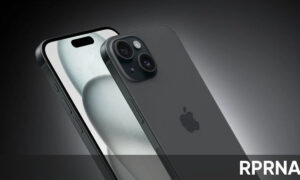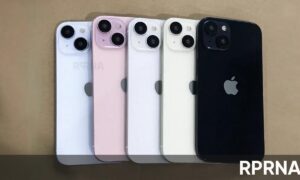Using various electronic devices? European Commission has a plan to force smartphones and other electronics companies to choose a common USB-C charging port on their devices.
JOIN US ON TELEGRAM
It will make the biggest impact on Apple, the company uses Lightning connector instead of the USB-C connector, uses by several Android users.
This way, you can use an existing charger and cables on your other/new devices.
Are your chargers piling up in a drawer?
We propose a common charger for mobile phones and other similar electronic devices.
A single charger will be more convenient for people and will reduce electronic waste.
Read more: https://t.co/hkspfjwlhu #DigitalEU pic.twitter.com/ZhWZ8xSGKH
— European Commission 🇪🇺 (@EU_Commission) September 23, 2021
In addition, the buyers will have the option to buy a device without a charger in the box, which means that is not compulsory.
The commission also confirmed that these rules will be applicable to other devices like tablets, headphones, speakers, cameras, and video game consoles. The manufacturers will have to provide information to buyers about the charging standards support of their device.
These proposed rules are only applicable to devices with wired chargers, not for wireless. In addition, there won’t be any requirement for a USB-C charging port if devices exclusively support only wireless charging (no port for charging), there’s a rumor that Apple could launch future iPhone without a charging port.

The Commission said, to reduce the e-waste and for the benefit of the consumers and the environment, the Commission has supported a common charging solution for mobile phones and similar electronic devices since 2009.
According to the European Commission, In 2020, approximately 420 million mobile phones and other portable electronic devices were sold in the EU. On average, consumers own around three mobile phone chargers, of which they use two on a regular basis. Despite this, 38% of consumers report having experienced problems at least once that they could not charge their mobile phone because available chargers were incompatible. The situation is not only inconvenient but also costly for consumers, who spend approximately €2.4 billion annually on standalone chargers that do not come with electronic devices. In addition, disposed of and unused chargers are estimated to pile up to 11,000 tonnes of e-waste every year.
As of 2018, around 29% of phone chargers sold in the EU used USB-C, 21% used Lightning, and around half used the older Micro USB standard, according to an EU assessment.
Apple said it disagreed with the proposals: “We remain concerned that strict regulation mandating just one type of connector stifles innovation rather than encouraging it, which in turn will harm consumers in Europe and around the world,” a spokesperson from the company told Reuters.
📲 A harmonised charging port (USB-C)
⚡ Harmonised fast charging technology
🔌 Possibility to buy a new device without charger
ℹ️ More info on device packaging to see if the charger you have at home is suitableMore about what we propose: https://t.co/OZGfAzUK1P #DigitalEU pic.twitter.com/oVqpBHNLSA
— European Commission 🇪🇺 (@EU_Commission) September 23, 2021
Commissioner Thierry Breton, responsible for the Internal Market, said: “Chargers power all our most essential electronic devices. With more and more devices, more and more chargers are sold that are not interchangeable or not necessary. We are putting an end to that. With our proposal, European consumers will be able to use a single charger for all their portable electronics – an important step to increase convenience and reduce waste.”
Today, the Commission is proposing:
- A harmonised charging port for electronic devices: USB-C will be the common port. This will allow consumers to charge their devices with the same USB-C charger, regardless of the device brand.
- Harmonised fast charging technology will help prevent that different producers unjustifiably limit the charging speed and will help to ensure that charging speed is the same when using any compatible charger for a device.
- Unbundling the sale of a charger from the sale of the electronic device: consumers will be able to purchase a new electronic device without a new charger. This will limit the number of unwanted chargers purchased or left unused. Reducing production and disposal of new chargers is estimated to reduce the amount of electronic waste by almost a thousand tonnes’ yearly.
- Improved information for consumers: producers will need to provide relevant information about charging performance, including information on the power required by the device and if it supports fast charging. This will make it easier for consumers to see if their existing chargers meet the requirements of their new device or help them to select a compatible charger. Combined with the other measures, this would help consumers limit the number of new chargers purchased and help them save €250 million a year on unnecessary charger purchases.
The revision of the Radio Equipment Directive is part the Commission’s broader action to address the sustainability of products, in particular electronics on the EU market, which will be the focus of a forthcoming proposal on sustainable products.
















